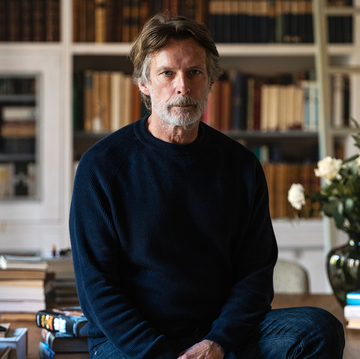With the average age of first-time house buyers having risen to 35, there have never been so many of us renting. But even if you have got on the ladder, the immediate dilemma you face is the same: how to create the cool, comfortable pad of your dreams that in no way resembles your student digs with their IKEA flat packs and Bolognese stains on the sofa.
So what can you actually do to upgrade your living space, if you don't have Kevin McCloud on speed dial and are not, as yet, a millionaire?
We spoke to London architecture practice Michaelis Boyd Associates to find out. You'll be familiar with the company's sleek style if you've ever stayed at Soho House or eaten at the newly refurbished Groucho Club. MBA are experts at maximising the potential in interiors, whether it is floor to ceiling windows in the new Battersea Power Station flats or the exposed wood flooring you see in their Byron restaurants.
So take that down those posters, throw out the paper lamp and follow these points from MBA director Ben Masterton-Smith.
Create a feature wall
We're all aware using paintings and prints to fill empty walls can bring a room to life. But championing one wall and using lots of different size and style of images is a modern update that adds real character to a room.
"I've got a great collection of pictures, from French maps from the 50s to my own travel photograph. Money spent on properly framing pictures makes a huge difference," Ben advises.
A great site if you're stuck for image inspiration is Surface View, who work with national collections to create unique takes on historic pieces. You can even get images printed onto blinds or wallpaper if you want a more statement look.
In fact, if you can make moderations to your home, having one wall completely done in a different colour or wallpaper can give a really distinctive edge to a space, although resist the temptation for that burnt orange shade which may grow tiresome day after day - teal and grey palettes are good options and don't look cold set against other plain walls.
Accessorise well
There's no way around it, good furniture is expensive. That said, if you want pieces that look more expensive than they are; Made, West Elm and Swoon Editions are all great places to look. When matching furniture together, look into what style the pieces: mixing sleek modern tables and Art Deco chairs, for example, is likely to clash.
If you can't drop money on furniture, this is where accessorising well really pays off. Building up a collection of objects that you love is where that 'house becoming a home' cliché becomes true.
"Lighting is a really good investment that can really add to a space and be beautiful as an object in itself," Ben suggests. He particularly likes the stylish designs of Michael Anastassiades (above): "They are simple, unfussy and would look great anywhere."
Whatever your living situation, investing in cushions or side tables is a no-brainer as you can take it all with you wherever you end up. Cos' currently collaboration with Danish furniture designer Hay is both affordable and stylish.
Strip spaces back
Exposed brickwork has become a derided metaphor for achingly cool hipster joints, but the distressed look is popular and can be achieved in far simpler ways.
"Ripping up old carpet and simply painting timber flooring in gloss is something you can do yourself in a weekend and really reinvents a living space" Ben explains.
Even if you've got a landlord to be fearful of, this can cost basically nothing so you may be surprised what they'll agree to.
Maximise daylight
Removing doors is an easy way to make your home feel bigger and more open-plan (though probably leave the bathroom one alone).
Ben also points out: "It is quite hard to do curtains in a way that doesn't block most of the daylight and first time buyers usually have smaller spaces anyway." He suggests taking down curtains to get the best light into a space and using simple blinds instead.
Be careful with colour
For most of us our first experience with coloured walls are the bright shades we insist on as seven-year-olds then begrudged throughout our teen years. Take that as a lesson that we get bored of excessive primary colours and go for more neutral tones when covering large aspects of the room like walls and flooring.
Ben suggests: "creating neutrally coloured spaces so they become a calming retreat", which doesn't mean you need to turn your Netflix zone into a dentist waiting room, just that it is much easier to buy a colourful coffee table or pillows as accent pieces than it is for everything to have to work around your bright green carpet.
Before anything else, de-clutter
Perhaps Ben's strongest recommendation is to try and "celebrate the nicest bits of your possessions rather than trying to fit everything in".
In other words, have a big - and ruthless - clear out before you try and transform a room. "Clutter always makes everything look less sophisticated," Out with the old, in with the new. Good luck.















